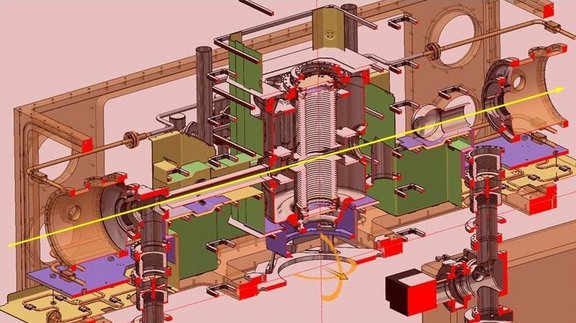The cryogenic reaction microscope
Pfeifer Divison
Research Group (AG)
Dr. Claus Dieter Schröter
Since the successful commissioning of the cryogenic storage ring CSR, our institute possesses a worldwide unique machine to store beams of atomic and molecular ions and to cool them down to extremely low temperatures (below -263°C or 10 K). True space conditions are thus available in the laboratory. Now, questions such as “How and via which reaction path do organic molecules form in the Universe? How do molecules transform into small dust particles?” may be answered.
The worldwide first cryogenic reaction microscope, called the CSR-REMI, has been developed for the CSR and is presently under construction. After integration of this combined electron and ion spectrometer into the storage ring, fundamental investigations of quantum dynamics in the field of atomic and molecular physics will be possible. For example, dynamic processes occurring when atoms, molecules or clusters break up following collisions with the slow and cold ions in the CSR can be studied with the highest resolution. Further, the electrons resulting from interactions with ultrashort laser pulses may be registered with high efficiency and resolution in coincidence with the molecular fragments of the cold molecular ions in the CSR. The applications will range from structure determinations of molecular ions by means of photoelectron spectroscopy to femtosecond time-resolved experiments on molecules in specifically prepared states using established pump-probe techniques.
The figure demonstrates the complex mechanical design of the CSR-REMI. Shown is the spectrometer with the two detectors for charged fragments (detection of electrons on the upper, ions on the lower detector). This central, inner part will be cooled down to below 10 K. Thermal shields (dark and light green) serve for thermal insulation against the outer CSR vacuum chamber that is at room temperature. Water and liquid helium for cooling are provided via pipes. The coils generate a homogeneous magnetic field around the spectrometer, and in addition correct the track of the stored ion beam (yellow arrow).
